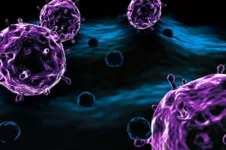Researchers at the University of Paris-Saclay, France, studying fluid from the airways of asthmatic children, discovered carbon nanotubes in all of the samples. This is the first time that they have been discovered in human bodies.
The study wasn’t aimed at finding a link between the presence of nanotubes and the children’s illness. Even if nanotubes aren’t directly toxic and there is still no proof of any health hazards, researchers fear that, in this case, other molecules could stick to their large surface and potentially get deep into the lung and cross cell membranes.
There is little information on how man-made nanoparticles can enter the environment, and their effect on human health. Natural nano-size particles have always existed but there are concerns that artificial nanoparticles are, or could become toxic, potentially causing unpredictable damage. There was the recent case of nanoplastics, found in toothpastes and cleansing creams, passing through water filters and entering the water cycle with unknown consequences.
Nanotechnology has proven helpful in many fields, but we do not know enough about the immediate and long term impacts of nanoparticles on our environment. Even if the necessary research should uncover any imminent risk, it is technically nearly impossible to clean the environment of any harmful nanoparticles.








